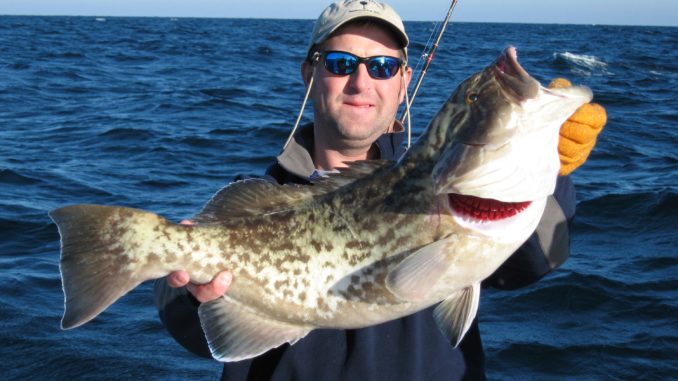
Gag grouper move onto structure in 55 to 80 feet of water for two-month feeding spree.
On a crisp, late September morning, with the sun just promising to rise, there is a flurry of activity at the Ocean Isle Fishing Center. On the docks, Capt. Chris “O.C.” Dew and Capt. Chris Dawson are readying the World Cat and Carolina Cat for the day’s charters.
Virtually identical 33-foot catamarans, these vessels are more serviceable than sleek, boasting lots of rod storage, seating, and most important, three giant livewells apiece — which make them virtually perfect for the target species of the day, the abundant and delicious gag grouper.
Gags move inshore to depths of 55 to 80 feet late in the summer and stay into the fall, with the bite usually beginning around Labor Day and peaking in October. And there’s no lack of ledges, livebottom, wrecks and reefs to search in the waters off the North Carolina/South Carolina state line. Boats that call Little River, North Myrtle Beach, Calabash, Ocean Isle and Shallotte home can easily access the same areas after trips of similar duration out of either Little River or Shallotte inlets.
Dew heads east out of Shallotte Inlet and finds a school of menhaden just outside the surf line. With just a few throws of the cast net, Dew’s son, Aaron, nets several dozen baitfish for one of the livewells before Dew heads offshore for an artificial reef seven miles off the beach.
“There re two keys to the fishing we’re doing,” O.C. Dew said, “bait and anchoring. We’re going to head to an artificial reef and jig up some other baits. We’ll use the pogies (menhaden), but the grouper prefer to have a selection.”
A short time later, Aaron Dew hands out four spinning rods with R&R sabiki rigs, two with tiny piece of squid on the hooks and two with the hooks bare. O.C. Dew explains that the baited hooks will catch pinfish and the “naked” ones will catch cigar minnows, and he’s exactly right. As soon as he locates a cloud of bait on his bottom machine, the four anglers fill the second and third livewells with pinfish and cigar minnows — which go in separate livewells.
It’s not a long ride to the 65-foot ledge Dew has chosen to fish, and once there, he judges the drift of the boat, repositions and gives the word to Aaron, who sends the Danforth anchor to the bottom, where it is made fast as the World Cat settles just a few feet from the intended mark on the GPS screen.
Immediately, Aaron clips a ball and a chum bag onto the downrigger, lowers the frozen mush to the bottom and cranks up several turns.
“The key to this kind of fishing is to be patient and sneaky,” O.C. Dew said. “I’ll rig half of you up for sea bass, and the rest of you will have grouper tackle. We’ll get everything feeding down there, and the grouper should start just about jumping into the boat.”
The rigs targeting black sea bass get conventional reels spooled with 50-pound mono and dropper loops, to each of which is tied a small circle hook holding a piece of squid. The baits are lowered to the bottom, with instructions to simply reel when a solid bite is detected.
Aaron helps them lower their baits to the bottom and instructs them to simply reel when they feel a solid bite. In almost no time, big sea bass and assorted other bottomfish come over the rail. The fishermen pick up the art almost immediately and are re-baiting and dropping again in no time.
O.C. Dew’s grouper tackle is Daiwa Sealine conventional reels, star drags with 80-pound Power Pro braid mounted on 50- to 80-class Star standup rods — combos that are powerful, yet light enough to hold for extended periods of time. Spliced onto the end of the braid on each outfit is about eight feet of 100-pound clear Sufix monofilament, which is knotted to a big, three-way swivel. A short piece of 50-pound mono is tied to the swivel, with a 16-ounce bank sinker looped onto the end. The lighter line is designed to break away in case it gets hung up in a fight with a grouper, so that the fish can still be pulled upwards. The leader is 130-pound clear Sufix, with an Owner circle hook snelled onto the end.
The three rods each get a different live bait: a menhaden, a pinfish and a cigar minnow, all three hooked just forward of their anal fins, and one by one, the baits are lowered to the bottom, with the drags locked down as tight as they can go. There’s not much of a wait before something happens. The angler with the cigar minnow is practically pulled to the gunwale of the big catamaran as his rod doubles over.
“Reel! Reel!” Aaron screams. Straining and sweating, the fisherman is able to turn the fish towards the surface, and in about a minute, a 12-pound gag grouper breaks the surface. O.C. Dew doesn’t bother with a gaff, reaching over the gunwale, grabbing the leader and hoisting the fish into the boat.
“You have to be quick,” he said. “Otherwise, you may lose half of your grouper to a barracuda hanging out under the boat. They like to lie around and wait for an easy snack to steal.”
The action that follows is more consistent than anything else. O.C. Dew said that a calculated, measured approach to this fishery pays dividends more than simply saturating the bottom with baits. He allows the anglers to rotate through, and there are never more than three grouper rigs down at any time. The others take their turn culling through masses of sea bass and a few vermilion snapper. Within two hours, the charter has its limit of grouper from seven to 20 pounds: one per person.
The VHF radio confirms that Dawson, fishing a different ledge just to the south on the other catamaran, has enjoyed nearly the same amount of success, and the captains decide to finish out the trip by trolling for king mackerel, using the remaining menhaden for that purpose. It doesn’t take long for the 20-pound outfits to start screaming, and the fishermen enjoy catching some pelagic fish before they head to the dock.
DESTINATION INFORMATION
WHEN TO GO — September and October are prime months to catch gag grouper as they move in closer to the beach. The fishery in 55 to 80 feet of water cranks up around Labor Day, depending on the water temperature, and will last through October.
HOW TO GET THERE — U.S. 17 stretches along the coast, paralleling the beaches of South Carolina’s Grand Strand and Brunswick County in North Carolina, and is a great route to access villages such as Little River, Calabash, Ocean Isle and Shallotte. If coming from inland, SC 9 will lead you into North Myrtle Beach and Little River, while NC 130 will take you to Shallotte, which is the jumping-off point for Sunset Beach, Ocean Isle Beach, and Holden Beach.
TACKLE/TECHNIQUES — For gag grouper, it takes heavy tackle to drag them up from the bottom before they can break off on bottom structure. Standup rods from 50- to 80-class, with conventional reels spooled with 80-pound braid tied to an eight-foot section of 100-pound mono that’s tied to a three-way swivel. A heavy bank sinker is tied to one eye of the swivel with a short piece of lighter mono; the other eye gets a leader of 130-pound mono or 100-pound fluorocarbon snelled to a big circle hook.
GUIDES/FISHING INFO — Ocean Isle Fishing Center, 910-575-3474 or www.oifc.com; Capt. Ronnie Atkinson, Fish Hook Charters, Little River, 843-283-7692 or www.fishhookcharters.com; Capt. Chris Long, Longway Charters, Little River, 843-249-7813 or www.longwaycharters.com; Fish Hook Charters, Little River, Capt. Ronnie Atkinson, (843) 283 7692 www.fishhookcharters.com.
ACCOMMODATIONS — Ocean Isle Inn, Ocean Isle Beach, 910-579-0750 or www.oceanisleinn.com; Islander Inn, Ocean Isle Beach, 888-325-4753 or www.islanderinn.com; The Pelican Motel, Cherry Grove Beach, 800-284-8824 or www.pelicanmotel.com; Sleep Inn, 909 US 17, Little River, 843-249-4848.
MAPS — John McWhite, ProFinder Charts, 910-512-6700 or www.prochipusa.com; Maps Unique, 910-458-9923 or www.mapsunique.com; Capt. Segull’s Nautical Charts, 888-473-4855 or www.captainsegullcharts.com; Sealake Fishing; Guides, 800-411-0185 or www.thegoodspots.com.

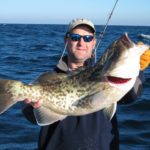
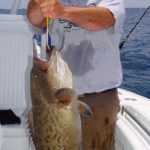
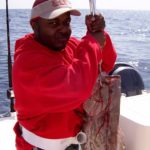
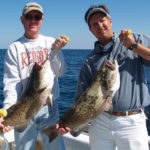
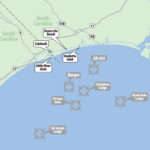



Be the first to comment